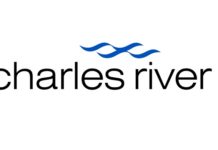As per insights, a significant increase in the small molecule active pharmaceutical ingredient (API) market has been projected, estimating it to be valued at approximately $284.7 billion by 2032, compared to $162.8 billion in 2022. A compound annual growth rate of 5.9% is anticipated during the forecast period from 2023 to 2032.
Several factors are influencing the growth of the small molecule API market. These include heightened research and development activities within the pharmaceutical sector, a rising prevalence of chronic diseases, and an increasing demand for generic medicines. Advancements in manufacturing technology as well as the availability of cost-effective treatment options also contribute to the sector’s growth. However, the market faces some challenges, such as intellectual property (IP) barriers and competition from other molecule types, such as biologics, which offer targeted and effective medicines.
To overcome these challenges, exploring opportunities in emerging markets like Asia-Pacific, Latin America, and Africa is a must. Rising demand for affordable and accessible drugs in these regions can provide the potential for manufacturers to establish themselves and focus on drug development. Additionally, the development of APIs for niche sectors, such as rare diseases, can offer new markets and competitive advantages to small molecule API companies.
Investing in advanced technology and infrastructure for developing high-potency APIs (HPAPIs) is another growth solution proposed for players in the small molecule market. Advancements in manufacturing techniques and technologies have enabled large-scale production of high-quality APIs, making pharmaceutical drugs more accessible to patients.
Continuous manufacturing is seen as a significant growth opportunity for the small molecule API market. By integrating automation, real-time monitoring, and advanced analytics, drug development manufacturers can enhance production efficiency and reduce costs, thus increasing their competitiveness in the market.
Furthermore, several areas show potential for growth in the small molecule API market, including green chemistry for sustainable manufacturing, artificial intelligence (AI), machine learning for efficient drug development, and new drug delivery technologies.
The major players within the small molecule API market, according to the insights, include Lonza, Cambrex Corporation, Dr. Reddy’s Laboratories Ltd, GSK plc, Merck KGaA, Novartis AG, Pfizer Inc., Teva Pharmaceutical Industries Ltd, and Gilead Sciences Inc. These companies play a crucial role in shaping the market’s dynamics and competitive landscape.























